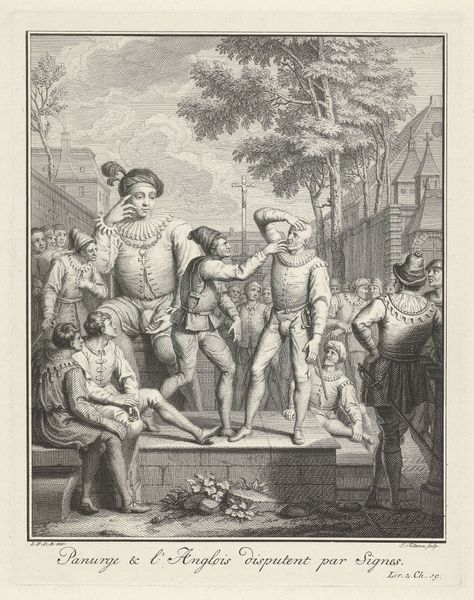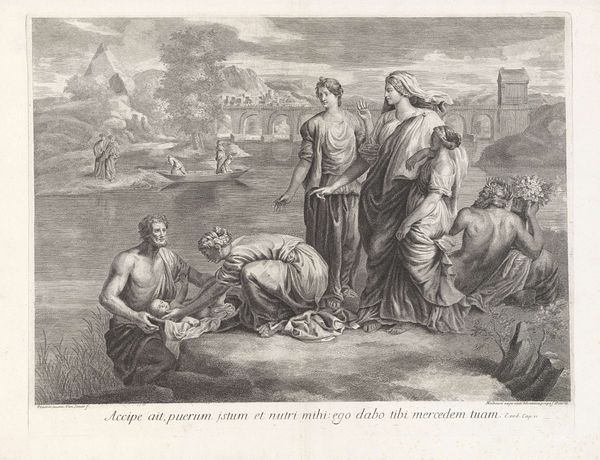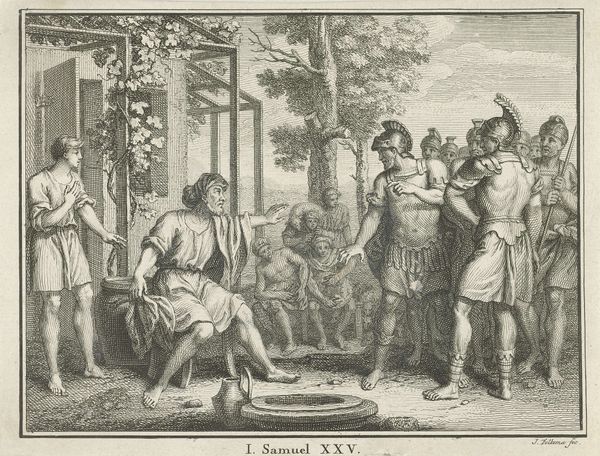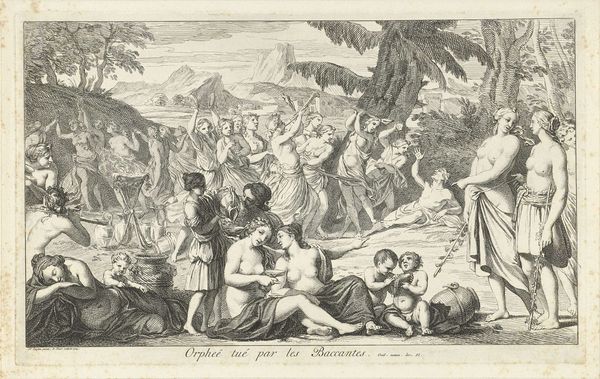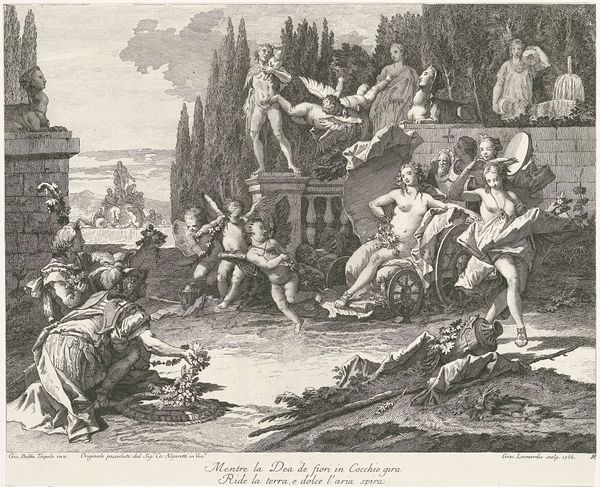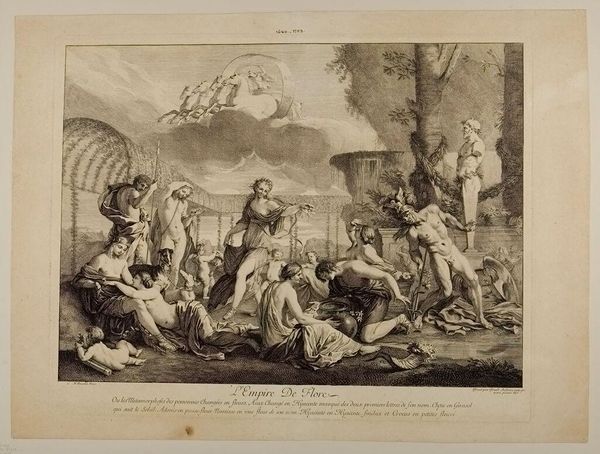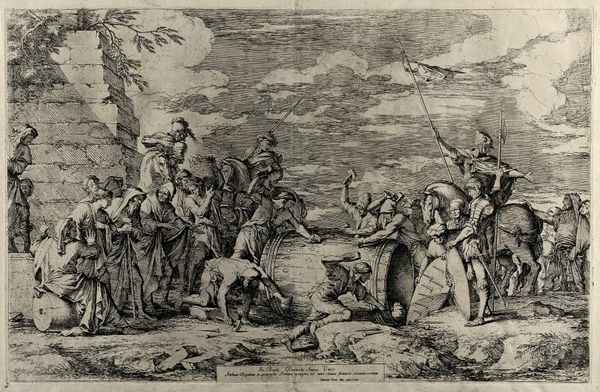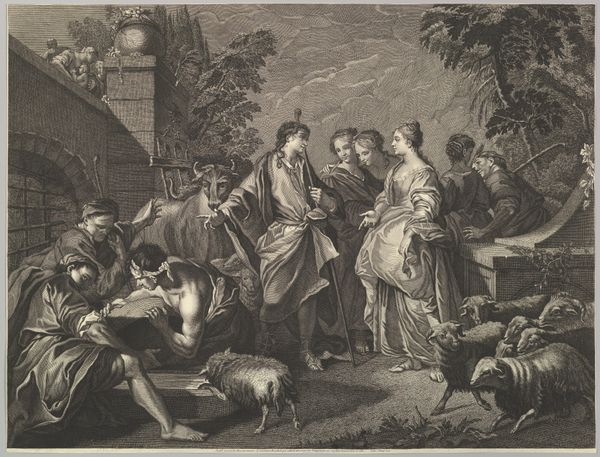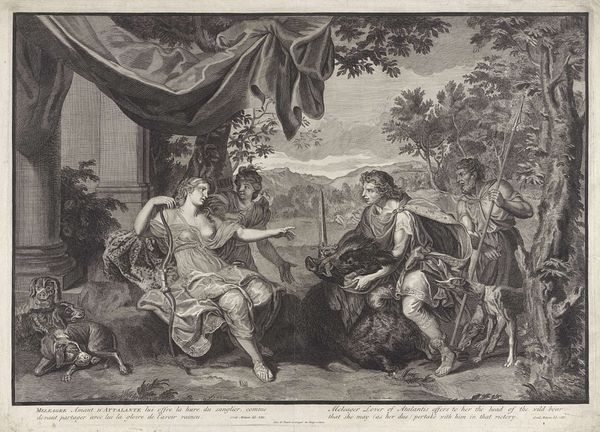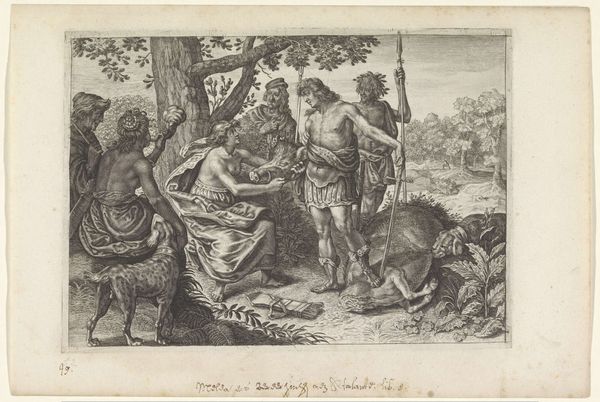
Joseph being sold into slavery by his brothers, who sit around a well dividing up the coins 1730s
0:00
0:00
drawing, print, engraving
#
drawing
#
narrative-art
#
baroque
# print
#
figuration
#
history-painting
#
engraving
Dimensions: Sheet (Trimmed): 13 5/16 × 18 7/8 in. (33.8 × 48 cm)
Copyright: Public Domain
Curator: Let's discuss this engraving from the 1730s after a painting by Silvestro Manaigo, titled "Joseph being sold into slavery by his brothers, who sit around a well dividing up the coins." It’s currently part of the Metropolitan Museum’s collection. Editor: Oh, wow. My first thought? The energy here is intense. You’ve got the almost casual cruelty of the brothers counting their money while Joseph is… well, less than thrilled, down by the well. Darkly fascinating. Curator: Precisely. The scene, taken from Genesis, is rife with betrayal and the brutal realities of power dynamics. Note the body language of the brothers versus Joseph. It is not merely about fratricide, it is about resources and power relations that traverse families and societal structures. Editor: Right, you’ve got that contrast with the callousness around the money and this feeling of deep despair with Joseph, and he looks almost like he is actively fighting to go toward this awful fate that's being designed for him. Did engravings like this circulate widely at the time? I mean, could people easily get an image so filled with complex emotional narratives? Curator: Definitely. Prints made these biblical scenes accessible to a broader audience, fostering discussion and moral introspection. Think about the rise of capitalism during that era and the role that scripture played in social imaginaries around family. Here we see those family units violently restructured through money. Editor: So it becomes less about personal piety and more about social commentary, like maybe how easy it is to justify awful acts if there’s a monetary reward, if the incentive to betray others has a concrete profit? Curator: Precisely! And we see the commodification of a human life presented with Baroque-style dynamism, complete with a very literal accounting of profit over a ruined life. This isn’t just religious art; it’s a meditation on ethical quandaries through the lens of faith, family, and economics. Editor: It’s unnerving how resonant the image remains. I think there is that really modern twist of turning your back and walking away from family… Curator: Exactly. It’s about more than the individual sin, but how collective greed reshapes social bonds. Editor: I suppose you are right. It lingers because of how clearly it highlights the enduring cost of greed on family. Curator: Yes, exactly! An excellent illustration, no pun intended, of the intersections between art, faith, and economics that speaks to issues that continue to haunt the present.
Comments
No comments
Be the first to comment and join the conversation on the ultimate creative platform.
